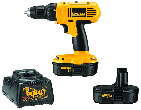It may be surprising to many people, but choosing insulation can be one of the most important aspects of making your home more comfortable and energy efficient. The simplest explanation for this is that insulation is designed to keep your house cool during the summer, and warm during the winter. However, choosing insulation is more than going out and picking out something that simply "looks good." Here is some information that you can use to not only make choosing insulation a little easier, but also to make sure that you pick out the correct insulation for you home.
- What is the R-value? Insulation is rated according to a system measured in R-values. Simply put, an R-value is what is used to rate an insulations ability to withstand heat transfer. This means the ability of the insulation to either keep heat in, or to keep it out.
- What is an insulation zone? Similar in nature to the hardiness zone set up by the United States Department of Agriculture, insulation zones are a guide that you can use to learn the general ratings that you should have for your insulation. You can find more about insulation zones, as well as a map explaining how they are used, by doing a simple search in your favorite browser. Remember, insulation zones are more of a guideline than a rule, but can be very helpful in narrowing down the type of insulation that you should use.
- Fiberglass insulation. Fiberglass insulation is one of the more traditional types of insulation available. In fact, this is usually the one that most people think about when they hear about insulation. Fiberglass insulation comes in sizes that range from 3-1/2 inch with an R-rating of R-13, to as thick as 12 inches with an R-rating of R-38.
- Molded expanded polystyrene. Very reminiscent of foam boards, molded expanded polystyrene insulation is one of the easiest forms of insulation to work with. Often this insulation can be cut trimmed down, and doesn't have the itchy side effect that fiberglass insulation has. This type of insulation comes in sizes of 1 inch thick with an R-rating of R-4, to as thick as 2 inches, with an R-rating of R-8.
- Extruded polystyrene. Extruded polystyrene has the same appearance as molded expanded polystyrene, and is used in much the same manner. The main difference between the two types of insulation is the R rating, which is R-5 for a thickness of 1 inch, and R-10 for a thickness of 2 inches.
- Polyurethane and polyisocyanurate. These two are another type of insulation that has the appearance of a foam board. However, the main difference in their appearance is that they are not as "rigid" as their polystyrene brothers. Typically, these types of insulation will come in a thickness of about 1 inch, and have an R-rating of between R-7 and R-8.
- Cellulose. Made from recycled newspapers, and other paper products, cellulose typically looks like a particularly fluffy dust bunny that you got from under your child's bed. When applied, it is usually sprayed on in layers of about 1 inch thick, and has an R-rating of between R-3.4 and R-3.8.
- Reflective. Reflective insulation gets its name from the fact that it "reflects" the heat back towards the source. Reflective insulation is usually made up of layers of reflective material such as aluminum foil, and cardboard. Another popular type of reflective insulation is basically bubble wrap made from aluminum foil. Depending on where this type of insulation is applied, it can reflect up to 97% of the radiated heat, and can have an R-value rating of between R-1.1 and R-18.
Author Bio
Lee Wyatt
Contributor of numerous Tips.Net articles, Lee Wyatt is quickly becoming a regular "Jack of all trades." He is currently an independent contractor specializing in writing and editing. Contact him today for all of your writing and editing needs! Click here to contact. Learn more about Lee...
Homemade Christmas
Are you looking for something other than Christmas from a box? Despite what many people think, there is nothing wrong ...
Discover More
Removing a Water Feature
Water features are a great addition to just about any landscape design, when they work. However, there are times when a ...
Discover More
Cleaning Portable CD Players
CD players are great things, and portable CD players are even better. After all, isn't it great to be able to listen to ...
Discover More
More Home Improvement Tips
Becoming More Energy Self Sufficient
In today's economy, who doesn't want to have a little extra money lying around? One of the best ways that you can do that ...
Discover More
Evaluating Home Energy Efficiency
For many homeowners, their energy bills are typically the costliest of their ongoing monthly expenses. The first step to ...
Discover More
What is an Energy Star Rating?
The next time you need to buy a major appliance for your home, choose one that carriers the blue-and-white Energy Star ...
Discover More

Comments